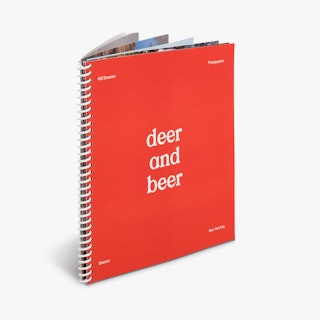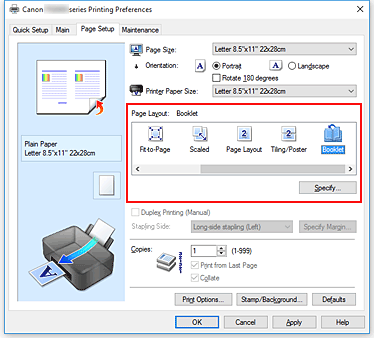What’s New in Visual Design for Promotional Booklet Printing This Year?
What’s New in Visual Design for Promotional Booklet Printing This Year?
Blog Article
The Important Guide to Recognizing Pamphlet Printing Options and Techniques
The process of booklet printing entails numerous considerations that can significantly impact the last product. From selecting the ideal layout and size to understanding the subtleties of binding techniques, each choice plays an essential duty. Furthermore, factors such as paper supply and printing methods more affect the effectiveness of the pamphlet. As one navigates these alternatives, it ends up being vital to grasp just how they interconnect and what that suggests for the general end result.
Comprehending Booklet Styles and Sizes
When thinking about booklet printing, comprehending the numerous styles and dimensions offered is essential for accomplishing the wanted presentation. Pamphlets can be produced in many formats, including saddle-stitched, spiral-bound, and perfect-bound, each offering distinctive advantages. Common dimensions range from standard letter (8.5 x 11 inches) to smaller alternatives like A5 (5.8 x 8.3 inches), enabling adaptability based on material and target audience.Selecting the ideal size can influence both the design and viewers engagement. Larger dimensions might suit visually driven web content, while smaller sized formats may be a lot more easy to use and mobile. In addition, the number of pages affects the choice of binding technique, as thicker brochures might call for sturdier bindings. Ultimately, comprehending these elements permits an extra customized approach, guaranteeing that the end product straightens with the desired message and visual, boosting the total effectiveness of the communication.
Choosing the Right Paper Stock

Binding Approaches: Options and Considerations
When it comes to binding techniques for brochures, numerous alternatives are available, each with unique advantages. Saddle stitch binding uses a cost-effective service for thinner brochures, while best binding strategies give an even more polished search for thicker publications. Wire-O binding stands apart for its sturdiness and convenience of usage, making it ideal for documents that require flexibility.
Saddle Stitch Binding
Saddle stitch binding provides a functional and economical remedy for constructing pamphlets, making it a preferred selection amongst authors and services. This binding technique involves folding sheets of paper in fifty percent and stapling them along the fold line, producing a neat and organized appearance. Commonly ideal for pamphlets with a reduced page count, saddle sewing is excellent for publications, pamphlets, and training materials. The simpleness of this method enables for quick manufacturing and is usually preferred for marketing items or brief runs. Nevertheless, it is vital to keep in mind that saddle stitch binding may not appropriate for thicker brochures, as the spine might not stand up under enhanced weight. In general, it continues to be a trustworthy choice for many printing jobs.
Perfect Binding Techniques
Perfect binding is an extensively utilized strategy that offers a specialist and refined coating to brochures and magazines. This method entails gluing the pages with each other at the back utilizing a solid adhesive, allowing for a tidy edge and the capability to hold a bigger number of web pages contrasted to saddle stitching. Perfect binding is especially suitable for thicker brochures, such as magazines and annual records, where a tough, flat spinal column is wanted. Furthermore, it uses the option for a printed cover that can be created to enhance visual charm. Nonetheless, considerations such as page matter, paper weight, and the planned use of the pamphlet ought to be taken right into account, as they can influence resilience and general high quality.
Wire-O Binding Alternatives
Wire-O binding, recognized for its durability and flexibility, provides an exceptional alternative for pamphlets that call for very easy web page transforming and a professional look. This binding method employs a series of metal loopholes that hold web pages firmly, permitting them to exist level when open. It is specifically ideal for brochures, presentations, and manuals because of its robust nature. Wire-O binding is available in numerous shades and diameters, fitting different web page matters and thicknesses. Additionally, it allows the addition of covers and tabs, enhancing the booklet's total aesthetic. Considerations for Wire-O binding consist of the selection of cable color, the dimension of the loops, and the extent of modification wanted, all of which can profoundly affect the end product's appearance and performance.
Digital vs. Offset Printing: Which Is Best for You?
When selecting a printing approach for booklets, understanding the distinctions between electronic and balance out printing is important. Digital printing makes use of contemporary technology to create premium prints quickly and economically, making it excellent for brief runs or jobs requiring fast turnaround times. It enables for customization, giving the capability to publish on-demand with very little waste.In comparison, offset printing is a typical technique that masters creating huge quantities with regular quality. It entails transferring ink from a plate to a rubber covering, after that to the paper, which leads to lively colors and exact details. Balance out printing typically requires longer configuration times and is extra cost-effective for larger volumes.Ultimately, the option in between electronic and counter printing depends on task requirements, budget, and preferred amount. For little, time-sensitive tasks, electronic could be the very best choice, while balanced out may be more effective for bigger, high-quality productions.

Designing Your Booklet: Tips and Best Practices
When making a pamphlet, mindful interest to design, font option, and shade usage can considerably improve its effectiveness. A well-structured format overviews the visitor's eye, while appropriate typefaces assure readability and communicate the desired tone. In addition, reliable usage of color can stimulate feelings and highlight key info, making the general style more impactful.
Picking the Right Design
How can one effectively pick the best layout for a pamphlet? It is important to examine the booklet's objective and target audience. A clean, arranged design boosts readability and interaction. Making use of a grid system can help in aligning aspects consistently, producing a professional look. Additionally, integrating visual pecking order via varying dimensions and placements of pictures and message can direct the viewers's eye and emphasize vital information. It is additionally vital to leave adequate white room, which avoids congestion and allows for much better emphasis. Ultimately, evaluating various formats through mock-ups can supply understanding into exactly how the layout performs in real-world scenarios, making sure that the last product satisfies both visual and useful demands.
Picking Ideal Fonts
A well-chosen font can greatly boost the total design of a booklet, complementing the design and enhancing the content's message. The choice of typefaces should think about readability, specifically for body text, as it guarantees the information comes to all readers. Sans-serif typefaces are frequently chosen for electronic styles, while serif typefaces can lend a conventional feel in printed materials. It's recommended to limit font choices to 2 or 3 to preserve visual comprehensibility. Furthermore, font style size plays an important duty; headings need to be distinctive yet not frustrating, while body message ought to be comfortable for reading. When picking font styles, positioning with the booklet's motif and target market is necessary for efficient communication and visual charm.
Efficient Use Shade
Shade acts as a powerful tool in booklet layout, forming perceptions and leading viewers feelings. It can evoke sensations of calmness, exhilaration, or trust, depending upon the shades picked. Designers must consider color concept concepts, making sure that the chosen combination straightens with the booklet's message and target audience. Making use of cozy colors like red and orange can produce seriousness, while cooler tones like blue and environment-friendly foster tranquility.Additionally, comparison plays a vital function; corresponding shades can boost readability and aesthetic allure. Uniformity in shade use across pages further enhances brand identity and cohesion. Ultimately, efficient color application not only catches interest however likewise strengthens Visit Website the brochure's objective, making it an important element of successful design.
Finishing Touches: Coatings and Special Effects
While numerous take into consideration the web content and design of a brochure the most vital elements, the ending up touches, such as finishings and special effects, play an important role in boosting its total appeal. Coatings can offer protection and durability, ensuring that the pamphlet stands up to deterioration. Matte surfaces provide an innovative, non-reflective surface area, while glossy coverings can make shades show up even more attractive and vibrant. Unique effects, like embossing or foil marking, add a tactile measurement that can create a remarkable perception. These methods can highlight particular locations, accentuating crucial information or developing visual interest. In addition, UV finishing can provide a high-shine surface that elevates the general look.Together, these finishing touches not just enhance the brochure's visual however also interact professionalism and reliability and focus to detail, eventually leaving a long lasting effect on the reader.
Expense Considerations for Brochure Printing
Recognizing the various expense factors to consider for brochure printing is crucial for companies and companies intending to maximize their budgets. Secret variables influencing expenses consist of the choice of ink, click here for more info paper, and binding approaches. Better materials, such as superior paper or specialized inks, typically boost the overall cost. Furthermore, the dimension and web page matter of the booklet play a significant duty; bigger pamphlets require more resources and time to produce.Another essential consideration is the printing method, whether electronic or countered, as each has its very own pricing structure and suitability for different amounts. Organizations need to also consider design prices, which can differ based on complexity and using specialist solutions. Inevitably, shipping and handling charges can include to the total, specifically for large orders. By reviewing these components, companies can make educated decisions that line up with their monetary abilities while achieving the desired quality in their published products.
Often Asked Concerns
What Are the Environmental Impacts of Booklet Printing?
The ecological influences of brochure printing include logging from paper manufacturing, carbon discharges from transportation, and waste generation from discarded products - Booklet Printing. Lasting practices, such as using recycled paper and eco-friendly inks, can mitigate these results
Just How Can I Make Sure Color Precision in My Brochure?
To guarantee shade precision in a booklet, one should make use of calibrated monitors, use specialist shade profiles, perform test prints, and select high-grade printing solutions that provide shade matching and proofing choices for best outcomes.
What Is the Common Turn-around Time for Brochure Printing?
The typical turn-around time for booklet printing differs depending upon the intricacy and quantity - Booklet Printing. Usually, it ranges from a couple of days to two weeks, affected by elements such as publishing techniques and ending up demands
Exist Minimum Order Quantities for Brochure Printing?

Can I Print Brochures in Several Languages?
Publishing pamphlets in numerous languages is possible. Numerous printing services provide choices for multilingual or multilingual formats, enabling efficient communication. Cautious planning assurances that design aspects suit different languages without jeopardizing readability or aesthetic appeals. Furthermore, factors such as paper stock and printing methods additional affect the efficiency of the brochure. When taking into consideration brochure printing, comprehending the different styles and sizes offered is vital for accomplishing the preferred presentation. When picking a printing approach for pamphlets, comprehending the differences between digital and counter printing is essential. In addition, the dimension and page count of the booklet play a substantial duty; bigger booklets require even more sources and time to produce.Another essential consideration is the printing strategy, whether electronic or balanced out, as each has its own rates framework and suitability for various amounts. click here now The environmental impacts of pamphlet printing include deforestation from paper manufacturing, carbon discharges from transportation, and waste generation from thrown out materials.
Report this page